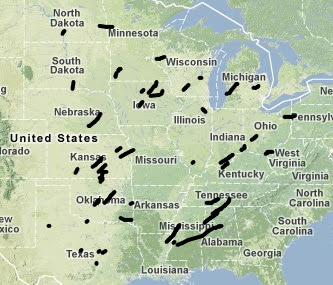
F5/EF-5 tornadoes are a force of nature most folks hope to never come face-to-face with. From 1950-2010, they made up only 0.1 percent of all tornadoes, but caused over 20 percent of all tornado deaths. Including 2011’s six additional EF-5s, there have been 58 F5/EF-5 “super tornadoes” since modern records began in 1950.
Though there are well-known examples of likely F5s prior to 1950, including the U.S. record deadliest Tri-State Tornado of 1925, this post will examine only those which have happened since official data has been kept.
The Storm Prediction Center has a nice list and map of locations for all 58 F5/EF-5s on record. Given the small sample size, there’s not a whole lot more to look at, but there are at least a handful of additional interesting stats we can glean from these events.
F5/EF-5s, as the lead stats show, are not that common and the most typical number of them in any year is zero or one. Over the 62 years from 1950-2011, more than half (33 exactly) of the years there was no F5/EF-5. 18 years have featured one, seven have had either three or two. The top four years include 1968 (4), 1953 (5), 2011 (6) and 1974 (7). On the flip side of their relative infrequency, F5/EF-5 tornadoes may come in swarms during major outbreaks like the seven on April 4, 1974 or the four on April 27, 2011.
The F5/EF-5 record is not yet full of enough data to draw major conclusions, and it is — as noted — “tainted” by outbreaks. Monthly stats heavily favor April and May, with April holding a slight (one tornado) historical lead at 20 total. But, when looking at “F5/EF-5 days” by month (see previous post on tornado days more broadly), we see that May takes a rather pronounced jump into the front with 17 F5/EF-5 days overall, compared to 11 in April and 9 in June.
When looking for “the zone” of where these giants occur, F5/EF-5s have impacted every state from North Dakota to Texas and then east to the Appalachians, except for Arkansas and West Virginia (though both had them basically touch the border). Additionally, Georgia and Florida have not seen an F5/EF-5 since 1950.
Alabama and Oklahoma tie for first in overall numbers when it comes to initial touchdown, as both states have seen seven F5/EF-5 tornadoes. When adding in tornadoes that crossed state lines, Alabama takes the lead with nine. Iowa, which has a fairly tight concentration of events in the northeast quadrant of the state, comes in third with six. Both Alabama and Iowa are smaller than a number of other states in the region, so their high-ranks are seemingly notable.
While again pointing out that the sample is quite small, it’s also possible that F5/EF-5s tend to occur a little earlier in the day than the whole tornado sample, which saw a peak between 5-6 p.m. local time during the current (1991-2010) averaging period. Over half of F5/EF-5s on record touched down prior to 5:00 p.m., with a 2-hour peak occurring in the 3:00-4:59 p.m. timeframe.
From 1950-2010, only 11 percent of F5/EF-5s did not cause any fatalities. Two caused 100 or more deaths and 19 caused more than 20 deaths. In 2011, every EF-5 killed people. Four had tallies greater than 20 deaths, and the May 22 Joplin tornado which killed 160, become the deadliest F5/EF-5 tornado since 1950 and the 7th deadliest in the written record.
Graphs can be viewed larger by selecting. SPC tornado data obtained through the Tornado History Project. Get updates on U.S. Tornadoes on Twitter and Facebook.
Latest posts by Ian Livingston (see all)
- Top tornado videos of 2023 - January 1, 2024
- March 31, 2023 tornado outbreak videos - March 31, 2023
- Top tornado videos of 2022 - December 31, 2022
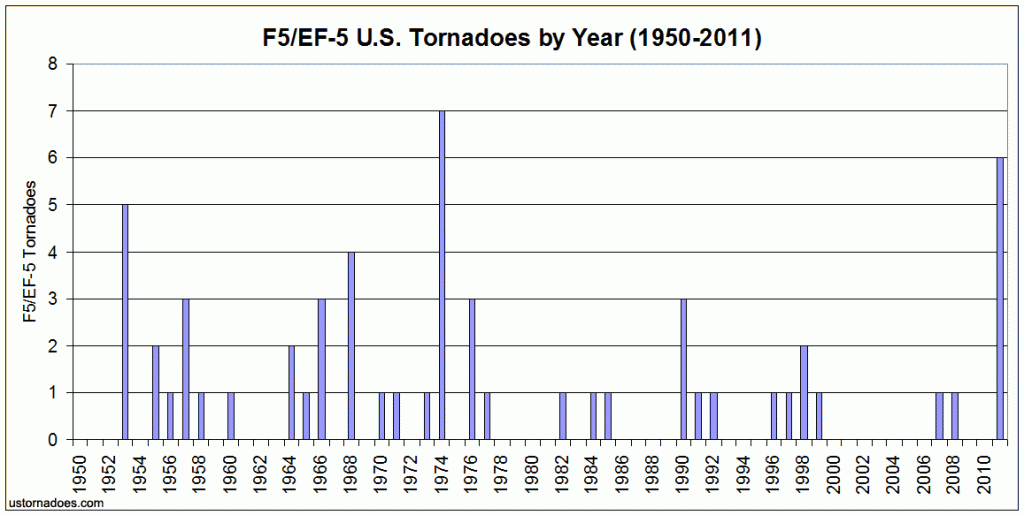
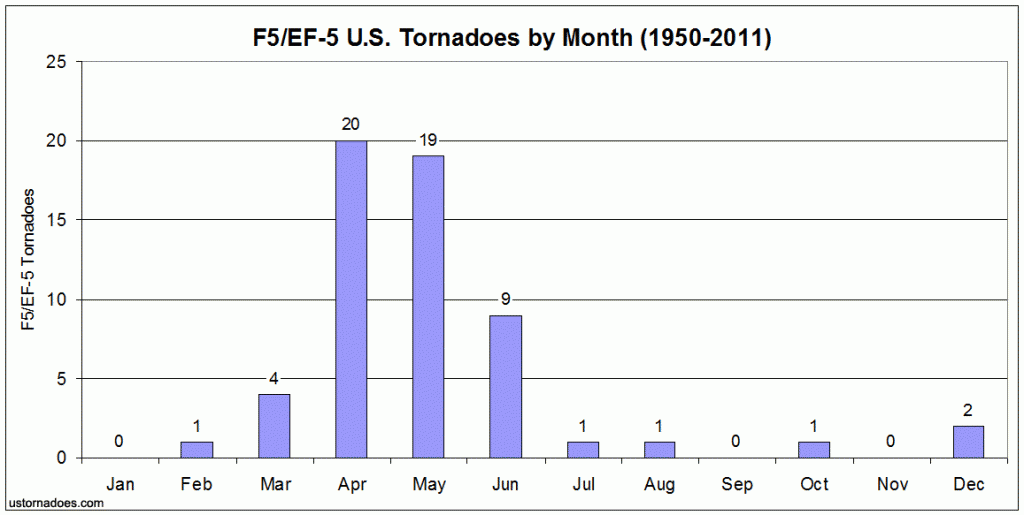
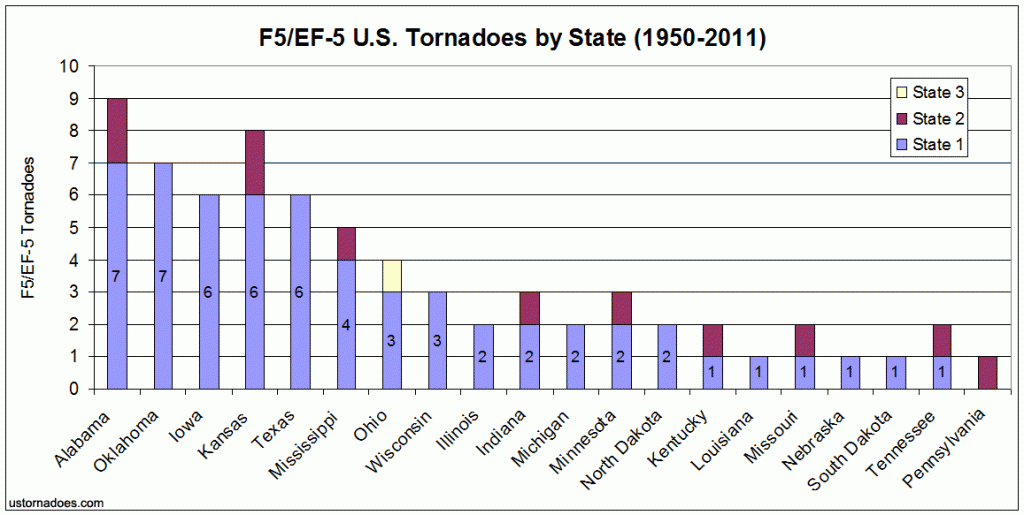
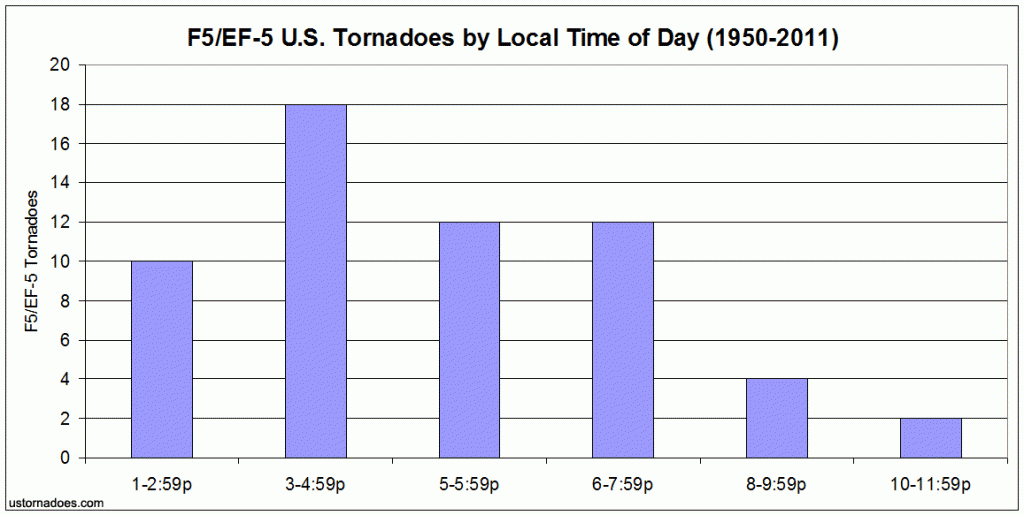
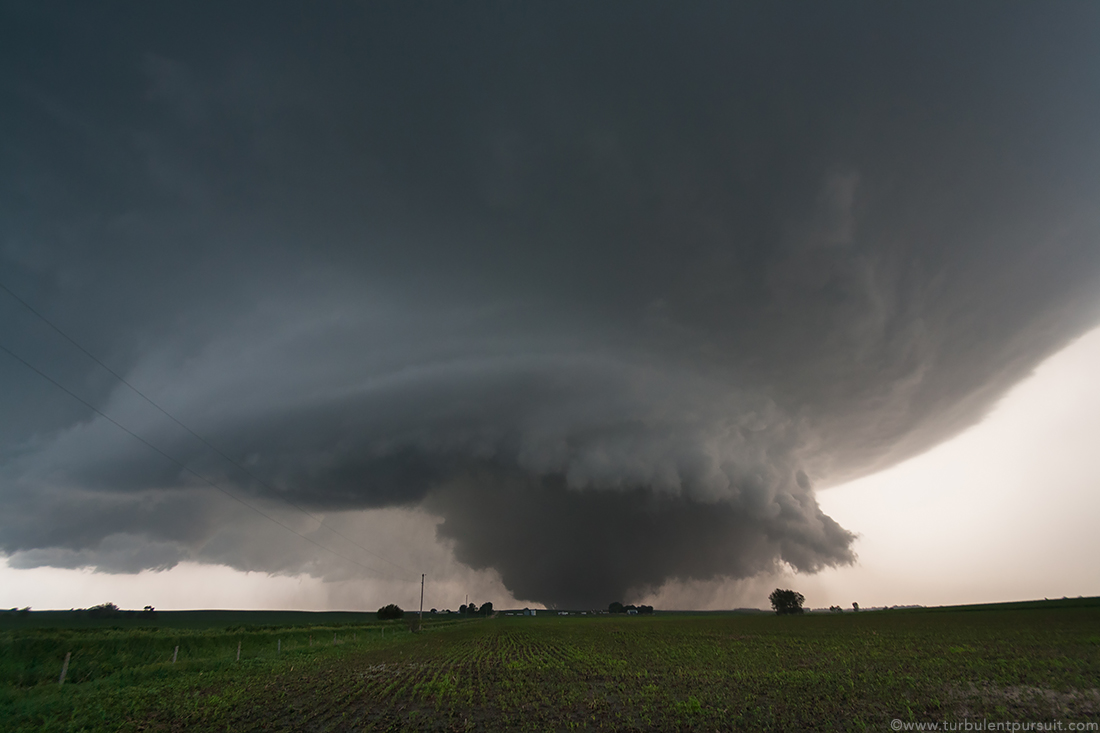
One thought on “F5/EF-5 Tornadoes: The 0.1 Percenters that Can’t be Ignored”